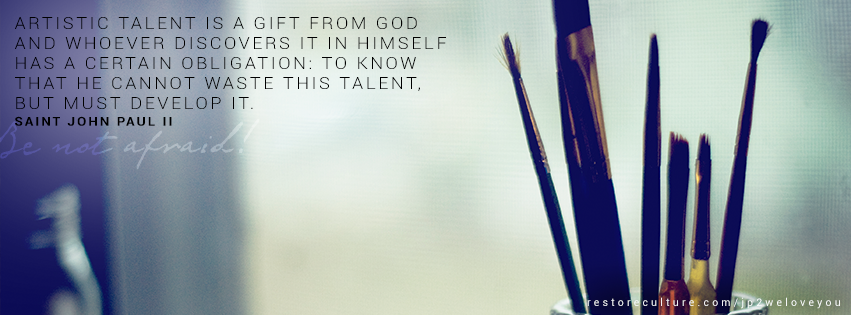NOTE: This is an edited version of an opinion piece that I wrote for Franciscan University of Steubenville’s student newspaper The Troubadour in March 2016.
This past February, Franciscan University was graced by the beautiful music of pianist and composer Eric Genuis. His concert was one of the most inspirational events I had experienced in quite a while. Not only was his music exquisite, but he also shared so many profound thoughts about the importance of beauty and the arts in people’s lives.
In my final semester of college and as a life-long ballet dancer, it was a timely reminder of the value of something that has always been an integral part of my life. Genuis exhorted the audience to fill their lives and their children’s lives with beauty. “Beauty is the language of God,” he said, and the arts have the ability to encourage, uplift, and offer hope to people through an encounter with beauty.
Genuis gave multiple moving examples of this power, such as seemingly hardened prisoners for whom he performed, being deeply touched by the beautiful music. He shared that one man stood up and exclaimed in the middle of the first piece that he had forgotten what hope felt like.
Genuis’ testimonies are concrete examples of how truly universal and unifying the arts can be. The arts, both fine and performing, have the power to unite, in cordiality and friendship, people who might otherwise not have much in common.
An instance of this is the friendship of Supreme Court Justice Ruth Bader Ginsburg and the late Supreme Court Justice Antonin Scalia. She is a petite, liberal, Jewish woman, and he was a burly, conservative, Catholic man. They clearly did not share the same political or religious beliefs, yet Ginsburg, in her statement following Scalia’s death, said that they were “best buddies.” A noted part of their friendship was a shared love of opera. There was even an opera written about the two of them.
We live in a society that is increasingly polarized and divisive when it comes to morals, to politics, to some of the really important questions in life. These are, obviously, consequential differences that need to be respectfully discussed and considered.
However, part of the power of the arts is that they are, arguably, a great equalizer, a way to set aside our differences if even for a little while. They are a means to celebrate the joy of being alive. All people, no matter their political or religious affiliation, can enjoy and be inspired by a ballet, a play, a concert, or a lovely portrait. They can be reminded that there is more to life and to the world than materiality. They can be reminded of their own capacity for creativity and for goodness or for evil.
In his “Letter to Artists,” Pope St. John Paul II, makes the important distinction between creation or bringing something out of nothing, which only God can do, and craftsmanship or working with already existing material, which is what man does. Nevertheless, he writes, “God therefore called man into existence, committing to him the craftsman’s task. Through his ‘artistic creativity’ man appears more than ever ‘in the image of God,’ and he accomplishes this task above all in shaping the wondrous ‘material’ of his own humanity and then exercising creative dominion over the universe which surrounds him.”

